Phone Number
(+91) 8655358999
In addition to pressure and temperature, the flow rate is one of the most important measured variables. The quantitative determination of amount, volume, and flow rate allows production processes to be optimized through control and regulation. Measuring fluid flow is vital in industrial settings to establish how much liquid or gas is flowing along with potential waste. Various industrial and commercial entities depend on a flow meter to determine the flow amounts of liquids and gases. This type of information makes it possible to create budgets and reports that are based on meter readings. The financial implications of fluid flow and potential wasted flow make it necessary for process industries to incorporate the systems.
The non-contact type flow meters install in seconds on most pipe materials. Measures full pipe clean to dirty liquid applications. Typical examples include water, well water, chilled water, hot water, city water, cooling tower water, glycol, deionized water, sea water, sewage, acids and more.
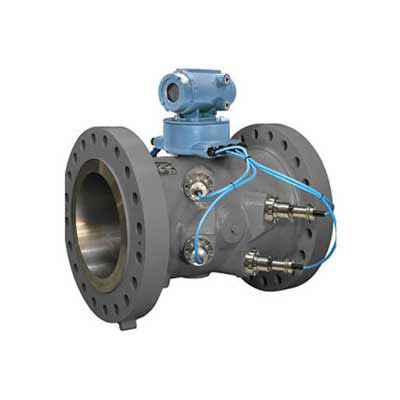
water, well water, chilled water, hot water, city water, cooling tower water, glycol, deionized water, sea water, sewage, acids
Contact type flow meters are those in which the sensing element is directly in contact with the sensing element. They are suitable for services that are in normal application. They are not suitable for highly corrosive liquid.
As one of the most common technologies for measuring flow in a pipe, differential pressure flow (DP Flow) measurement has a long history of achieving high accuracy and repeatability. The DP flow rate of process fluids is derived from the pressure differential caused by an engineered restriction within the pipe. This unique and scalable measurement technology enables integrated pressure, flow and temperature solutions and provides reliability and increased plant productivity.
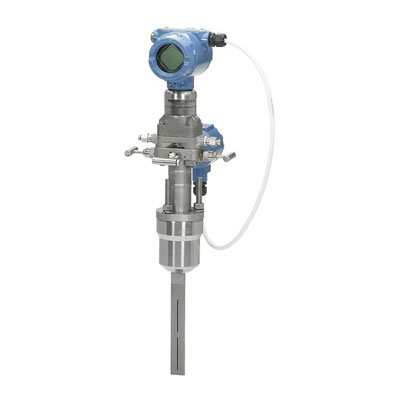
Differential Pressure Flow meters have a wide range of applications in Process Industries. They are independent of temperature and are more accurate as compared to other Flow meters.
Ultrasonic flowmeters are commonly applied to measure the velocity of liquids that allow ultrasonic waves to pass, such as water, molten sulfur, cryogenic liquids, and chemicals. Transit time designs are also available to measure gas and vapor flow. Be careful because fluids that do not pass ultrasonic energy, such as many types of slurry, limit the penetration of ultrasonic waves into the fluid. In Doppler ultrasonic flowmeters, opaque fluids can limit ultrasonic wave penetration too near the pipe wall, which can degrade accuracy and/or cause the flowmeter to fail to measure. Transit time ultrasonic flowmeters can fail to operate when an opaque fluid weakens the ultrasonic wave to such an extent that the wave does not reach the receiver.
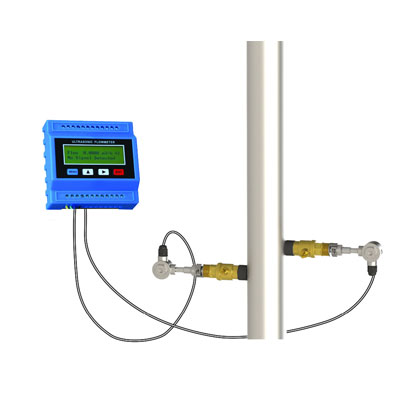
In order of usage, water/wastewater industry, chemical, food and beverage, oil and gas (although not for oil and gas fluids but in support of the processes), power, pulp and paper, metals and mining, and pharmaceutical.
A Coriolis meter is based on the principles of motion mechanics. When the process fluid enters the sensor, it is split. During operation, a drive coil stimulates the tubes to oscillate in opposition at the natural resonant frequency. As the tubes oscillate, the voltage generated from each pickoff creates a sine wave. This indicates the motion of one tube relative to the other. The time delay between the two sine waves is called Delta-T, which is directly proportional to the mass flow rate.
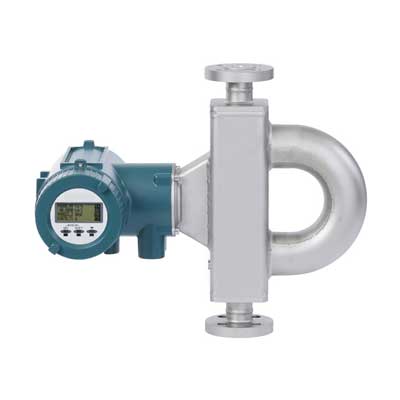
The industries in order of higher to lower are chemical, oil and gas, food and beverage, pharmaceutical, pulp and paper, power, metals and mining, and water and wastewater followed by all others in small amounts
In the industrial environment, electromagnetic flowmeters are primarily used in water management and in the processing, life sciences and food industries. In tunnel construction and mining, robust magmeters are often the only option for measuring highly abrasive ore slurries with entrained solids, sand-water mixtures, filler materials or bulk solids with the required accuracy.
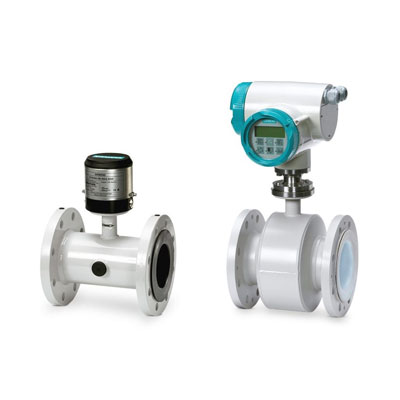
In order of usage, water/wastewater industry, chemical, food and beverage, oil and gas (although not for oil and gas fluids but in support of the processes), power, pulp and paper, metals and mining, and pharmaceutical.
Variable area flow meters are simple and versatile devices that operate at a relatively constant pressure drop and measure the flow of liquids, gases, and steam. The position of their float, piston or vane is changed as the increasing flow rate opens a larger flow area to pass the flowing fluid. The position of the float, piston or vane provides a direct visual indication of flow rate. Design variations include the rotameter (a float in a tapered tube), orifice/rotameter combination (bypass rotameter), open-channel variable gate, tapered plug, and vane or piston designs.

"Process Flow Monitoring, Pump Protection, Pure Water Production, Filtration Systems, Chemical Production, Reverse Osmosis, Demineralization/Regeneration, Fume Scrubbers, Cooling Towers".
A flow switch is a device that monitors the flow of air, steam or liquid. It sends a "trip signal" to a different device in the system, such as a pump. The flow switch can indicate to the pump to shut off or to turn on. Some of the general uses are for pump protection, for cooling-circuit protection and alarms for too high or too low flow rates.
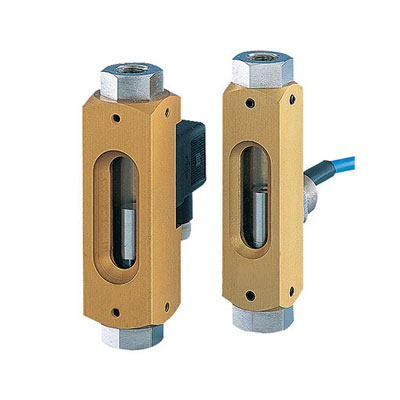
Triggering an alarm if a supply shuts off, Shutting down an electric motor during insufficient flow, Air conditioning / ventilation units, Central heating systems, Swimming pool chlorination systems
Flameproof Flow indicators are used in hazardous areas. They are specially designed to operate in hazardous and flamable environment. They are special aplication devices.
Thermal flowmeters use the thermal properties of the fluid to measure the flow of a fluid flowing in a pipe or duct. In a typical thermal flowmeter, a measured amount of heat is applied to the heater of the sensor. Some of this heat is lost to the flowing fluid. As flow increases, more heat is lost. The amount of heat lost is sensed using temperature measurement(s) in the sensor. The transmitter uses the heat input and temperature measurements to determine fluid flow. Most thermal flowmeters are used to measure gas flows. Thermal flowmeters represent 2% of global flowmeter sales.
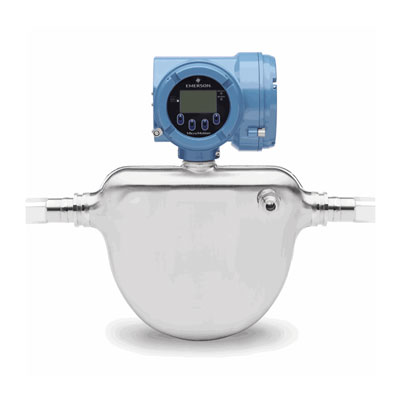
Some of the new applications for thermal flow meters include recovery of methane from coal mines, measurement of flare gas flows, measuring emissions from steam generators and boilers, measurement and recovery of landfill gas, ethanol distillation and refining, and monitoring of flue gas. Since many of these are new measurement applications, thermal flow meters are not necessarily replacing other types of meters. Instead, they are being selected as the meter of choice since they handle large line sizes and are mainly designed to measure gas flow.
Rotating paddle sensors with electrical transmission output for remote indication of liquid flow rate. Adjustable insertion length models are available. Used to monitor liquid flow rates in pipes. Applications include irrigation, cooling systems, and leak detection. Non-Magnetic Sensing, Adjustable for 1-1/2 to 40" (38.1 to 1016 mm) Pipe, Pulse or 4 to 20 mA. The Insertion Paddlewheel Flowmeters are used to monitor liquid flow rates in pipes from 1-1/2 to 40" and is available in brass or 316 SS body. The unit outputs a frequency proportional pulsed or 4 to 20 mA output. The pulse models are a square wave output signal with frequency proportional to the flow velocity and the 4 to 20 mA models have a linear output of the velocity with 4 mA equal to 0 ft/s and 20 mA equal to 25 ft/s.
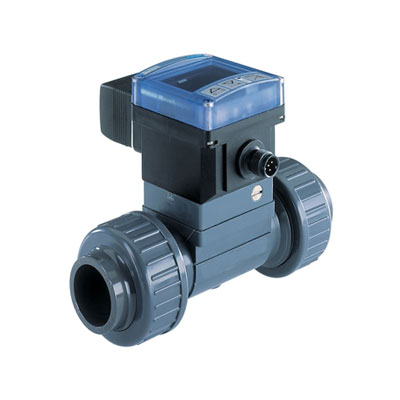
Bearings and shaft offer excellent wear protection even in applications with particulate for long life, Weatherproof and submersible rated for irrigation applications, One unit adjustable over a large pipe size range, Multiple wetted material choices offer.
A turbine flow meter measures the velocity of liquids, gases and vapors in pipes, such as hydrocarbons in fuel flow measurement, chemical flow metering, water flow metering, cryogenic liquid flow metering, air or gas flow metering, and general industrial flow metering. High accuracy turbine flowmeters are available for custody transfer of hydrocarbons and natural gas. A mass flow computer is often used in custody-transfer applications to correct for pressure, temperature and fluid properties in order to achieve the desired accuracy. Other low viscosity applications are tap and demineralized water, fuel flow meter solvents, and pharmaceutical fluids.
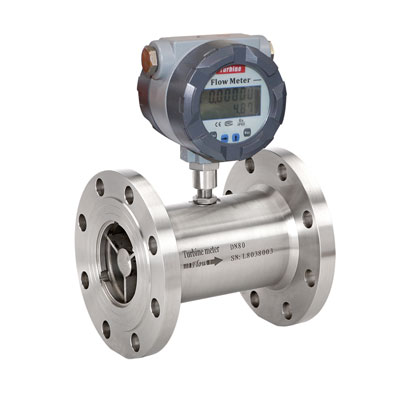
In order of magnitude from largest to smallest, these are used in oil and gas, water and wastewater, gas utility, chemical, power, food and beverage, aerospace, pharmaceutical, metals and mining, and pulp and paper.
Vortex flow meters offer many advantages for flow measurement including easy installation without impulse lines, no moving parts to maintain or repair, less leak potential and a wide flow turndown range. Vortex meters also offer very low power consumption, allowing for use in remote areas. Additionally, Vortex meters are unique in that they can accommodate liquids, gasses, steam and corrosive applications. Vortex flow meters are also able to withstand high process pressures and temperatures.
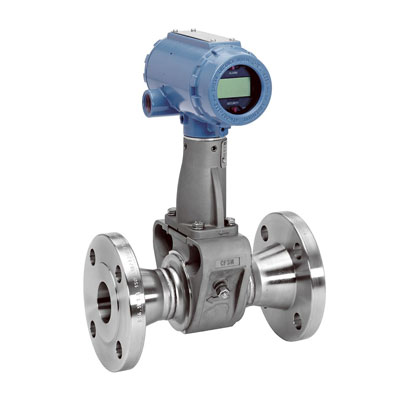
Different media solutions, such as liquid, or gas, can affect the capability of the vortex flow meter. Liquid - Liquids with heavy particle suspensions will wear down or clog internal parts, such as the bluff body, causing flow meter errors. Vortex flow meters struggle with liquids that have a high viscosity since they tend to dampen the formation of vortices and reduce the effective range. Particles and internal bubbles do not usually affect vortex meters. Most manufactures are calibrated for liquids of 1 CST viscosity. Anything above that will raise the minimum readable flow rate, reducing rangeability. Gas- Gas is compressible and changes volume when placed under pressure, heated, or cooled. For systems where gas is the primary media, the vortex flow media should have sensors which monitor changes in temperature and pressure in the system.